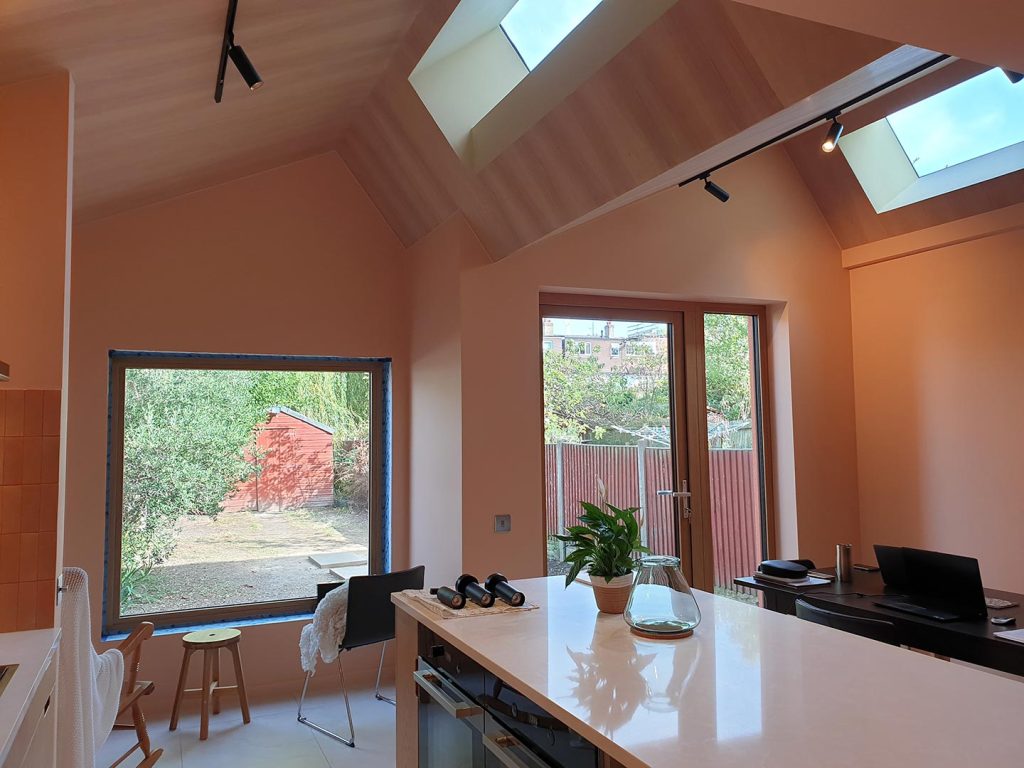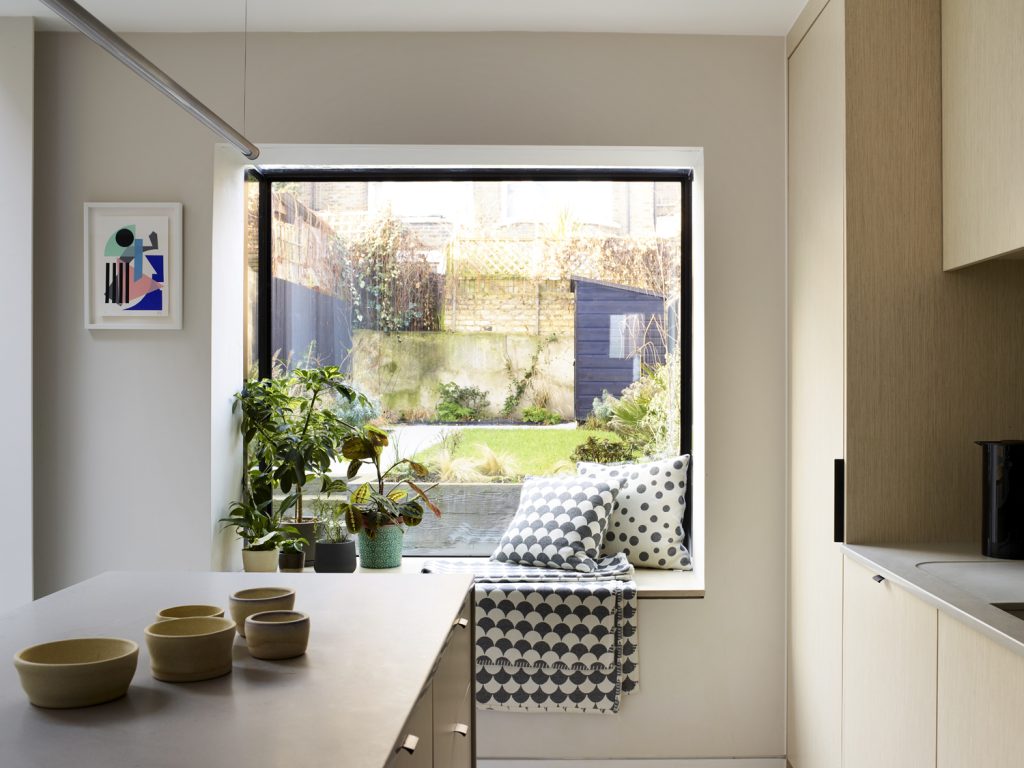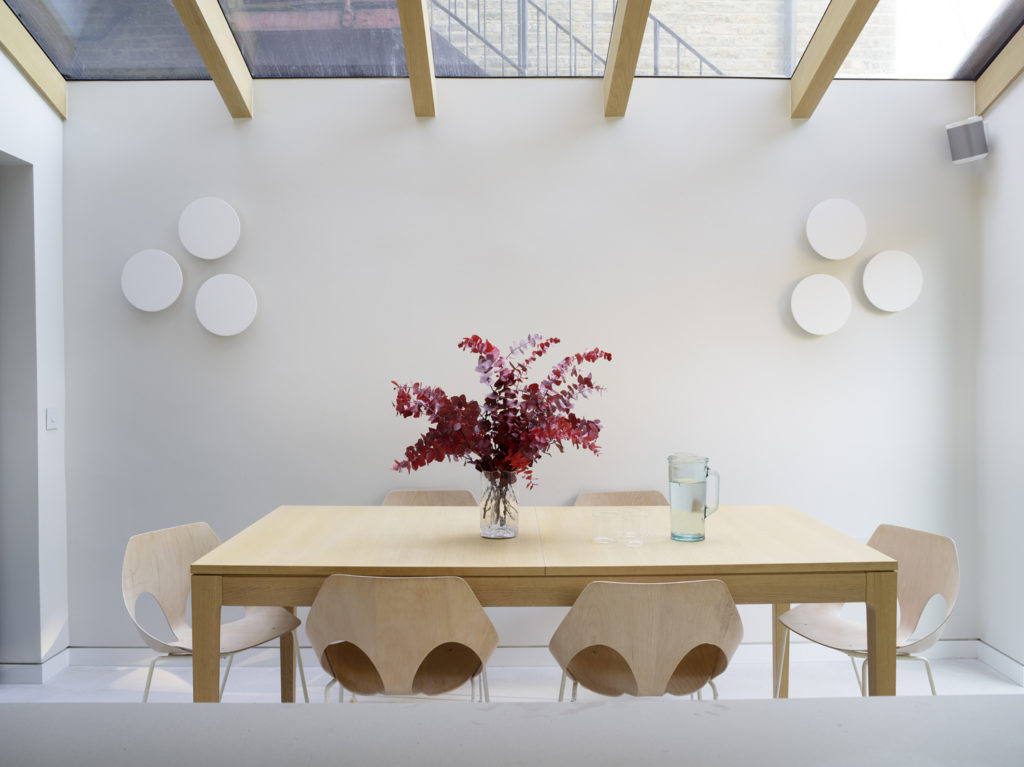Design for a healthy home
< Back to InsightsA home is more than just shelter, warmth and security. We spend 90% of our time indoors, a significant amount of this at home – especially for older adults, the caregivers of young children and those who work from home. Our home environment plays a major role in our physical and mental health and therefore so too does design for a healthy home.
Health starts at home.

How do we design for a healthy home?
The main aspects of home that affect our health are temperature, light, air quality and biophilia (connection to nature). By considering each of these in addition to planning your space to suit your lifestyle, and creating beautiful interiors that reflect your personality, the design of your home can contribute to your mental and physical health.
Temperature: Not too hot, not too cold, but just right.
A healthy home should be in the Goldilocks temperature range – ideally be between 18 and 21 degrees. This helps reduce the risk of damp, cold and overheating – all of which can negatively impact our health.
People with existing health conditions are especially vulnerable. Being cold can exacerbate symptoms for those with respiratory or cardiovascular conditions, as well as those with diabetes, arthritis, circulatory issues and mental health problems. The NHS spends over a billion pounds a year on treating people with illnesses related to cold homes – to the extent that in some areas, social prescribers are now able to prescribe help with heating bills or with adapting homes to be more efficient in the future.
At a less extreme level, cold-related illnesses can cause absence from work, social isolation, and sleep deprivation. Those living in cold homes are more susceptible to stress.
Overheating can have similar detrimental effects on our health with those with existing diabetes and cardiovascular conditions most acutely affected. A study of 40 homes in Southwark London showed all reached temperatures above 25 during their summer study period, with one quarter reaching 30 degrees. At these levels, residents’ sleep and mental health becomes impacted.
It is likely that with climate change, overheating in summer will become as big a problem as cold in the winter. Looking at how a house performs year-round is key to our health, and a vital part of designing fora healthy home.
Passive House design principles for a healthy home
Keeping a home at a steady and comfortable temperature (between 18 and 21degrees) is harder, and more expensive, in an uninsulated, draughty home.
We adopt Passive House principles in the design of all our projects, to ensure the form is efficient.
We insulate all new fabric, and where possible, will also retrofit high-quality insulation to the existing fabric. Combined with double or triple glazed windows and doors, this can improve thermal stability, keeping the heat in, and the draughts out.
We aim to exceed airtightness values, as set by Building Standards, to instead reach those recommended by Passivhaus for a healthy and comfortable environment.
In new buildings and extensions, we will often design overhanging roofs, or recessed windows to maximise shade and protect against overheating. These allow in plenty of light, but reduce the solar gain from direct sunlight helping to keep the home at a consistent indoor temperature.
Natural ventilation can be used for cooling homes effectively in summer. Openable windows in lofts allow stack ventilation to come into effect, drawing cooler air in from the lower levels
Fresh air for health and ventilation
An airtight home needs proper ventilation, to keep the air fresh and to protect against damp, mould and condensation. We recommend installing a Mechanical Ventilation and Heat Recovery (MVHR) unit. This system circulates air through the house while recovering heat from the waste air to warm the fresh incoming air and maintaining a consistent temperature.
The MVHR filters out dust, pollen and pollution from the outside, improving indoor air quality.
We also recommend using natural materials and low VOC (Volatile Organic Compounds) paints. This helps to reduce off-gassing and chemical odours within the home.
Connecting to nature for better health
Biophilia refers to the innate affinity of human beings with the natural world. Studies have shown that exposure to nature, including natural light, fresh air, plants and views of nature has a positive effect on mood, resilience and mental health. What’s more, elements that evoke the natural world such as patterns and images that can also be beneficial.
We like to welcome the outside in – whether through views through large windows that provide views of nature, or through use of natural wood finishes.

Daylight
Light is an important factor in our mental health. Lack of sunlight in the winter, here in the northern hemisphere can lead to depression, tiredness and vitamin D deficiency. In designing healthy homes we like to include large windows and bring natural light into the whole house. In doing so, natural daylight supports our circadian rhythms – key to good mental health.
Siri has written more about daylight in our blog Embracing Daylight.

Designing for both a healthy home and a healthy planet
As you may have noticed from our other blogs, many of the recommendations for a healthy home, also contribute to a low energy home. Our health and wellbeing is intrinsically linked with the health and wellbeing of the environment. We need to think regeneratively, not just reducing our negative impact, but actively creating a positive environment for ourselves and future generations.
If you are thinking of transforming your home to a healthy, low carbon home, get in touch with us for a chat.
Let’s have a chat about your vision and
how we can help you realise it.
Collective Works are an architecture & design studio. Our network of professionals will create your perfect solution.
